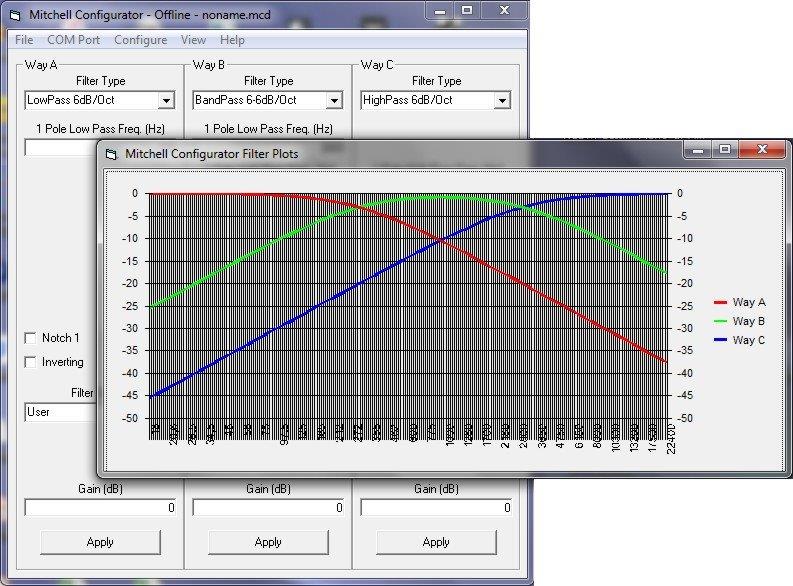The Mitchell Analog Electronic Crossover is an incredibly versatile frequency-dividing device that can be easily configured to fit virtually any speaker system for multi-amping.
Most loudspeakers use a passive network (called a “crossover”) to divide the sound spectrum so that each loudspeaker receives the appropriate frequencies: low frequencies at the woofer, mid frequencies to the midrange and high frequencies to the tweeter.
The passive crossover is subject to various compromises that limit speaker performance. The only solution to eliminate the effect of these compromises on speaker sound is to use an active crossover instead, along with an amplifier for each speaker. This method is called “active multi-amplification”.

The Mitchell is equipped with six programmable filter modules to obtain a 3-way stereo crossover filter or a 6-way mono filter. The modules in each channel can be cascaded to obtain more complex filter networks at the cost of a reduction in the number of channels.
Each module can be programmed to be a lowpass filter, a highpass filter or a bandpass filter. Additional notch filters and a shelving function (band boost or band cut) are provided, along with an all pass filter to perform phase alignment. Each module can be programmed independently, and the output level and phase of each module can be set independently.
The Mitchell is configured thanks to a USB connection via an application that runs on Windows computers (Linux and Mac versions available later) which allows total freedom in setting the various configurations of each module, as well as giving support for the design of filters of various types: Butterworth, Chebishev, Bessel.

The Mitchell features both single-ended and balanced inputs and outputs. A trigger input allows you to control the switching on and off from another device (for example a preamplifier). The Mitchell is also equipped with an IR receiver to detect the on/off command from the standard M2Tech remote control. The operation of this received IR receiver is also programmed via the app.







